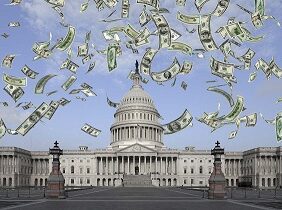With lawmakers back in Washington after the November elections, President Biden formally submitted an emergency spending request to Congress. In his November 18 letter the president identifies $98.6 billion in “emergency” spending needs in response to natural disasters ranging from last year’s wildfires in Maui to the recent devastation wrought by hurricanes Helene and Milton. Congress last adopted a natural disaster-focused supplemental in December 2022 when it was appended to a FY2023 omnibus spending bill.
This current request is a more than $75 billion increase from the set of emergency spending needs the president identified in his June 28th letter requesting funds in response to natural disasters and the collapse of Baltimore’s Key Bridge. Most of the increases are directly related to Hurricanes Helene and Milton that hit the Southeast in late September and early October.
See a breakdown of funding requests by agency and account.
Some notable accounts made up the bulk of the spending and saw dramatic increases compared to pre-Helene requests:
- FEMA’s Disaster Relief Fund = $40 billion (up from $9 billion)
- Department of Agriculture Farm subsidies = $21 billion (up from $2.833 billion)
- Department of Housing and Urban Development Community Development Block Grant = $12 billion (up from $2.8 billion)
- Department of Transportation Emergency Relief Program = $8.1 billion (up from $3.7 billion)
- EPA Water Infrastructure State Revolving Funds = $3 billion (up from $0)
- Small Business Administration Disaster Loans account = $2.25 billion (up from $127 million)
There are other interesting changes in the most recent request. A number of items appear to no longer be an emergency as they were included in the 2023 request but are no longer mentioned in the current one.
- The request drops more than $1 billion in “emergency” spending previously sought to rebuild federal facilities and roads due to flooding, landslides, mudslides, and snowstorms in western states. It’s possible these agencies, which include the National Park Service, Fish and Wildlife Service, Bureau of Land Management, and Forest Service, simply met this need by reprioritizing existing funding made available as part of the regular appropriations process.
- It also drops $3.5 billion in funding the president previously requested for various Operations & Maintenance, Procurement, and Military Construction accounts at the Pentagon in response to Typhoon Mawar and other disasters.
Other changes of note.
- Small Business Administration. Last October the White House had requested $127 million in the Disaster Loans Account for Hurricane Idalia and the Maui Wildfires. Also $76 million in expenses for administering various programs in response to COVID-19 (Paycheck Protection Program and three others). And $14 million for the Inspector General to provide oversight of these programs. Notably the account was exhausted even before the full extent of hurricane damage was known. The Disaster Loans Program Account request thus increased nearly 17-fold ($2.25 billion compared to $127 million). But there is no COVID-specific money sought in the current request. The administration also does not seek a specific amount for the Inspector General, but requests funds for the cost of administering the loans and oversight of all declared disasters.
- The recent hurricanes also have a clear impact on NOAA’s priorities. Last October the president requested $600 million to procure two fully-equipped aircraft to replace NOAA’s aging “hurricane hunter” aircraft which are expected to be decommissioned around 2030. The current request seeks $733 million “to complete the construction of the two fully-equipped aircraft already underway and procure a third.”
An emergency supplemental spending package is considered one of the few must-pass items on the 118th Congress’s lame duck agenda. As such, $98 billion may be a floor, rather than a ceiling for spending. Lawmakers should narrow any emergency supplemental spending package to those items that are truly an emergency. And the next Congress must work at improving federal budgeting to both help communities better prepare and recover from natural disasters.











Get Social